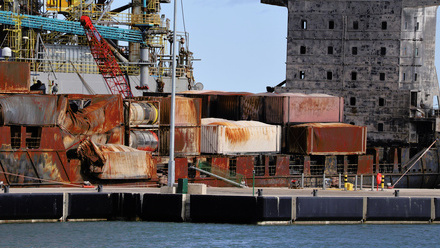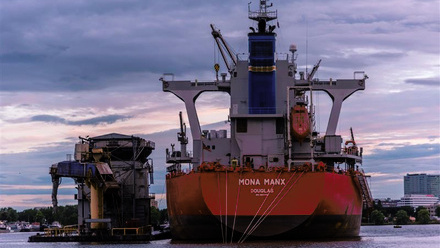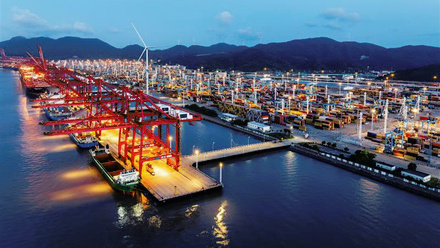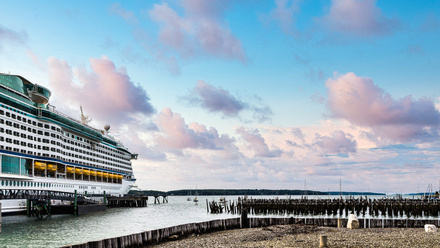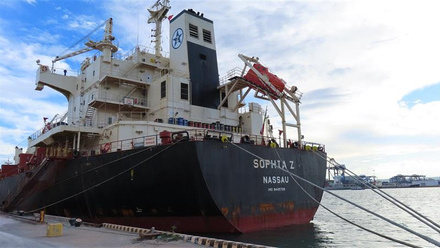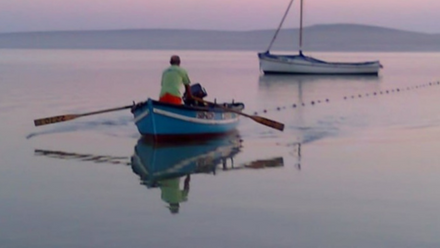Fatigue and repetitive tasks to blame for MV Alfred accident
On the east coast of Swona Island, Scotland, a grounding of the roll-on/roll-off ferry resulted in 41 injuries to passengers and crew, and damage to both the ship and the cars it was carrying.
Humans have a capacity for becoming desensitised when performing a task they have completed many times before. Once the mind has adjusted to a routine – even one that is, on the face of it, not particularly difficult or dangerous – we can still make errors.
This is a common factor in many marine accidents. While we might expect that where an incident occurs because of human error, it is primarily the result of inexperience, the data does not always seem to bear this out in practice. This certainly was the case in the 2022 grounding of MV Alfred.
Departing Gills Bay not long after 1pm on 5 July 2022, MV Alfred set off for St Margaret’s Hope at a speed of 15 knots, for its second passage of the day, with a complement of 84 passengers and 37 cars and trucks on board.
The vessel looked set for a trouble-free voyage, with clear skies and relatively calm waters. But unbeknown to the crew, there was a problem; its master, sat at the controls, was operating on less than five hours of sleep.
The vessel rounded the Island of Stroma, staying between 100m and 300m off the coast. Attention to the vessel’s passage plan would note a substantial deviation close to the north of the island, where the vessel followed the coast for some time before turning 90 degrees and heading north toward Swona. The master was not concerned; after all, passing very close the shore of these islands had been established as a matter of habit by now, the culmination of thousands such crossings.
As the vessel neared the Swona shore, the master applied six degrees of port rudder, sending the vessel swinging toward the coast. Some 70 seconds later, the master gave a startled shout, and applied 60 degrees of starboard rudder, switching the engine to full astern.
But it was too late. MV Alfred hit the rocks at a speed of 13 knots, sending passengers careening on the deck, and jostling the vehicles on the car deck. Some 36 passengers and five crew were injured. Partially damaged but fortunately not taking on a great deal of water, the vessel refloated soon after, continuing to St Margaret’s Hope before offloading the passengers.
Microsleeps and ‘monotonous tasks’
In the subsequent investigation, the UK Marine Accident Investigation Bureau (MAIB) identified fatigue as a leading cause of the incident, and also cited that as a symptom of fatigue, the IMO recognises the concept of a ‘microsleep’ – a short period of around 10 seconds in which “the brain disengages from the environment” including visual and auditory stimuli. Sleep-deprived people are particularly susceptible to these microsleeps at a time of ‘low workload’. “Monotonous tasks… can result in loss of interest and boredom, which also increases the effects of fatigue,” the IMO notes in a 2019 circular, Guidelines on Fatigue.
Tired from his short night of sleep and early 3:30am start, MAIB concluded the master had fallen asleep for 70 seconds as the vessel neared the coast of Swona. “...the master could be heard on the VDR [voyage data recorder] discussing that he believed he might have fallen asleep,” MAIB noted.
Performing a passage that he had successfully navigated some 20,000 times before, on an uneventful, warm day with good visibility, it is safe to say that the master was not in an acute state of overstimulation. In fact, his experience was deemed by MAIB to be a contributing factor: “The master’s significant experience on the route and the highly repetitive nature of Alfred’s schedule between Gills Bay and St Margaret’s Hope had probably desensitised him to the risks of transiting close to the shore.”
Compounding the issue was unofficial policy to allow the officer of the watch to complete maintenance tasks on deck at times of good visibility and daylight, instead of having two sets of eyes on the horizon. The chief engineer was on the bridge along with the master but was monitoring equipment near the time of the grounding.
Therefore, a fatigued seafarer was left in sole charge of MV Alfred’snavigation, on a route that, MAIB concluded, was unnecessarily close to the coast.
“Although compliant with the company’s SMS [safety management system], the master’s plan to take the vessel just 250m from the shore in an area with plenty of sea room was unsafe given Alfred’s 280m turning diameter and 400m stopping distance,” said the MAIB report. “In particular, the plan ignored the charted eddies to the east of Swona Island and offered inadequate sea room to allow the bridge team to respond to any mechanical defects or other emergencies.”
Lessons learned
The damaged bow of the vessel was cut off and replaced in drydock to prevent the structural integrity of the vessel causing recurrent problems.
Issued a major nonconformity by the Maritime and Coastguard Agency (MCA) given the various safety procedures not followed on the bridge that day, Pentland Ferries fitted CCTV to ensure that its crews were following procedures and implemented a fatigue management plan for its vessels.
It has also trained crew members in ‘bridge resource management’ – the name given to a kind of training which encourages better teamwork, communication and decision making. Finally, Pentland Ferries introduced third-party auditing to ensure that bridge safety procedures are followed.
Image: MV Alfred docked at Brodick terminal, Isle of Arran
Tell us what you think about this article by joining the discussion on IMarEST Connect.

